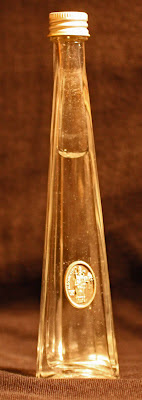Some heartfelt sympathy is in order for St. Boniface. After all, he lost his head to the Frisians when he decided to go back to their neighborhood to de-paganize them after once, years before, throwing in the towel on a similar mission. Today, St. Boniface is the patron saint of Germany, the one man–an Englishman, no less–greatly credited with bringing Christianity to the entire region. He worked tirelessly for the gospel.
Some historians denigrate his tactics because those tactics were, by present-day standards, extreme. All to often he showed little patience with the culture of those to whom he brought the gospel.
The most famous tale of his saintly life surrounds his felling of Thor’s Oak, a tree whose massive size made it a shrine among the pagan Germans. Boniface would have nothing of such heresy, so he chopped it down. In some renditions of the story, when he was at it with his axe, a straight-line wind came by and finished the job, breaking Thor’s Oak into four chunks, each of which revealed the plain fact that this shrine’s insides were rotten in every which way. The people were stunned at the fall of a tree they’d worshiped. Whatever happened that day, it was the kind of mighty deed that eventually sped his ascension to sainthood.
But Boniface lost his head in Friesland, among my ancestors nonetheless, when a gang of the world tallest white folks offed him, men who looked more like Sitting Bull than A. Kuyper. The date was June 5, the day before Pentecost, 754 A.D.

There’s always another side to the story, however, and one of the Catholic versions goes like this: they attacked him because they believed the boxes he carried with them were filled with gold. They weren’t. They held books.
I’d be mad too.
Some stories go further. When surrounded by the fearsome Fries, Boniface advised his couple dozen blessed followers to offer no resistance. Then he raised his Bible to protect himself from the blade that tore through the Word and then felled him–he is, remember, a saint. Right there in Dokkum, where all of this happened, that’s the pose he’s still taking.

I picked up this beautiful little bottle of holy water eight years ago right there in Dokkum, at the St. Boniface chapel, its water from a glorious little spring that opened up right there when some beast of burden made tracks in the muck a thousand years ago, a spring that translated into miracles.
Elegant, isn’t it? Cost me two euros, but I liked it the moment I saw it. I don’t know that I took back any other curio from our entire visit, save a book I long ago sold on ebay and grand gouda gone in a week.
My bottle of St. Boniface’s finest has now stood on a shelf behind me for eight years. Yes, the water recedes. I’m not sure how blessed what’s within is right at this moment any more, but someday my children are going to have to toss this little bottle because I’m not going to. It doesn’t take up much space. Besides, it’s become a delicate little symbol for me too, the icon it’s meant to be to other believers, a thin glass bottle that reminds me of the real human aspiration for faith itself.
We want badly to believe–all of us. Me too. We need stories to keep us alive and healthy and humble. We need crosses and little bottles of holy water, crescent moons and white buffaloes, even staggering oaks that can and do fall with whatever rogue winds blow by.
I’m not saying they’re all alike, only that we humans really do want to believe. I honestly don’t need this elegant bottle setting beside me here, but its un-holy water has holy meanings, or so it seems to my soul.
We need a savior.


